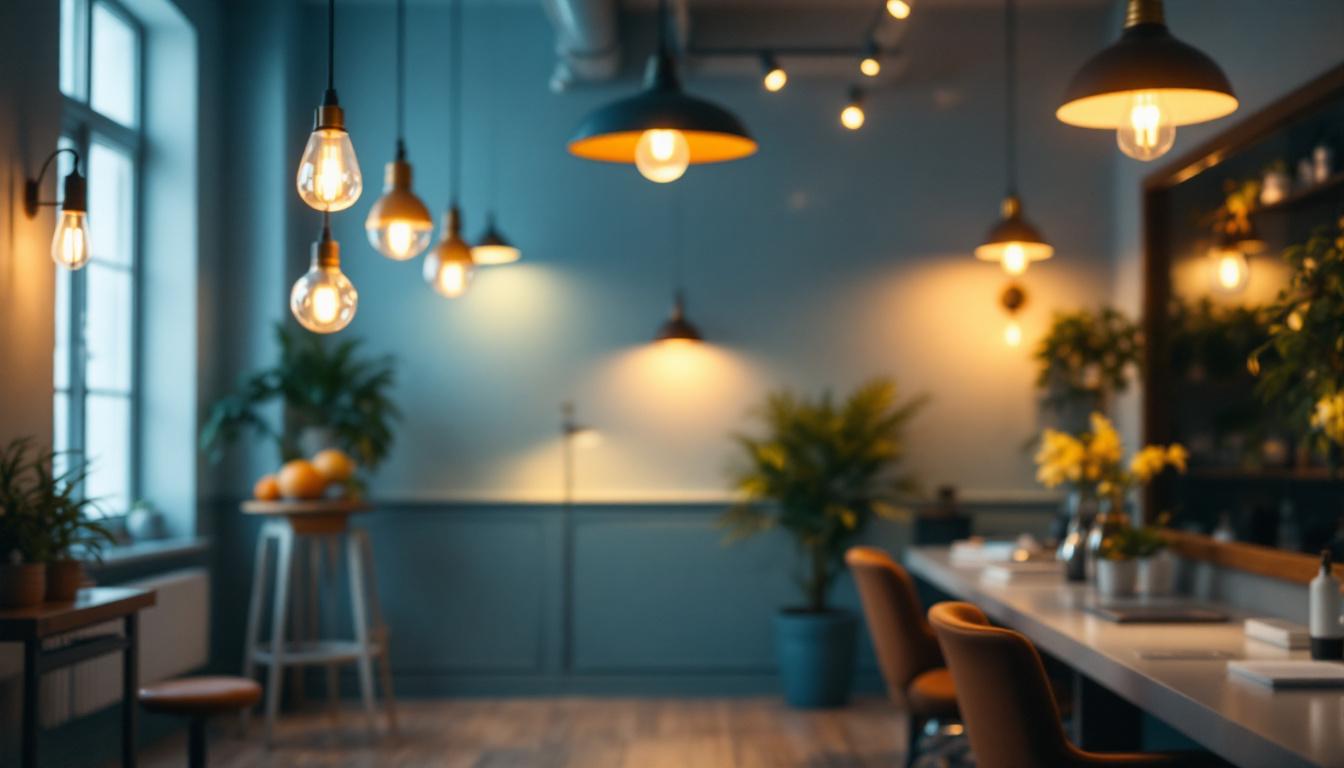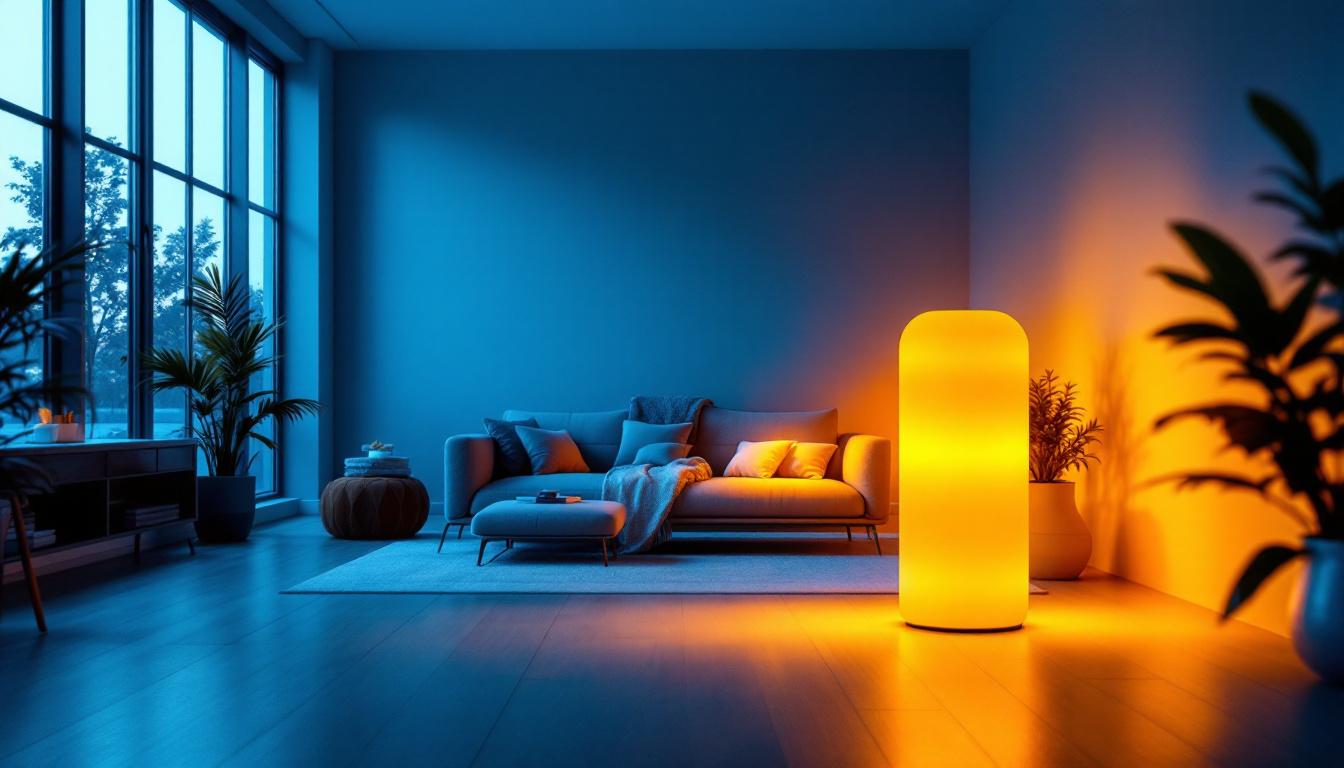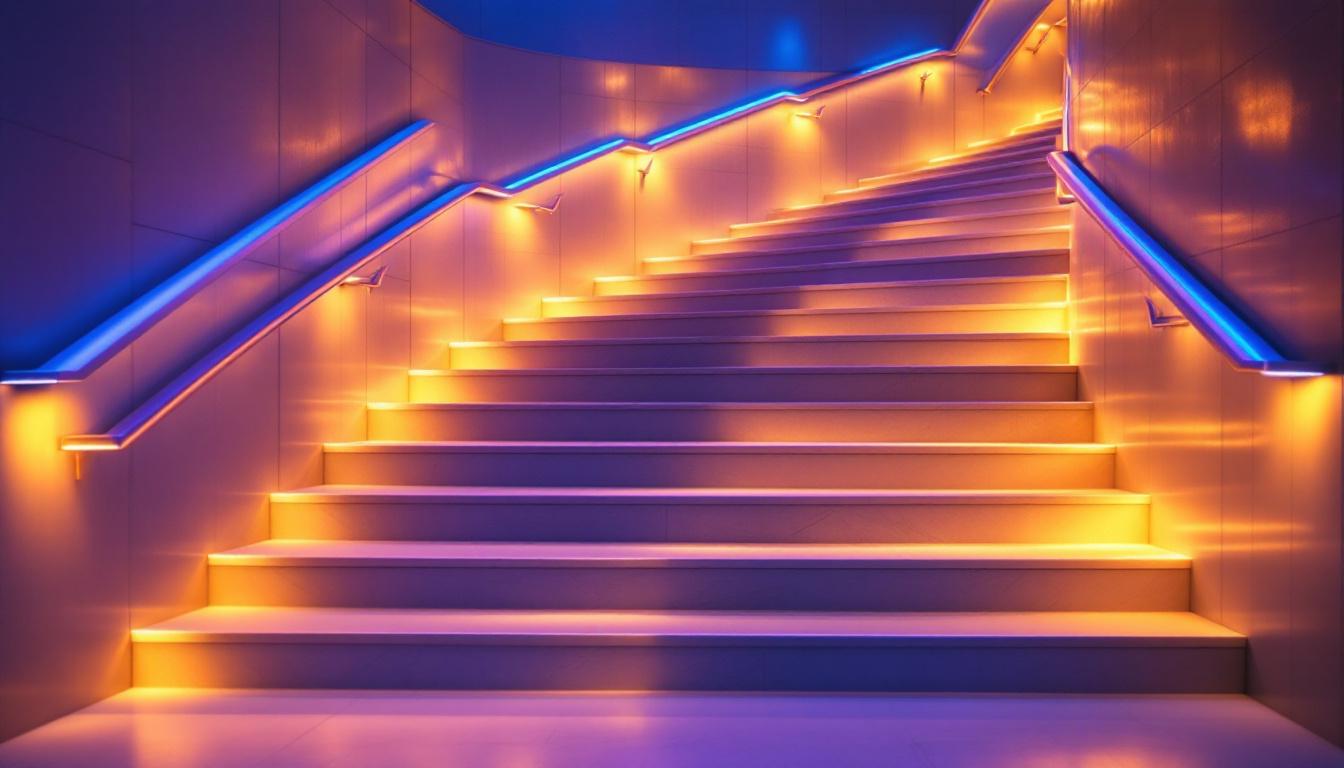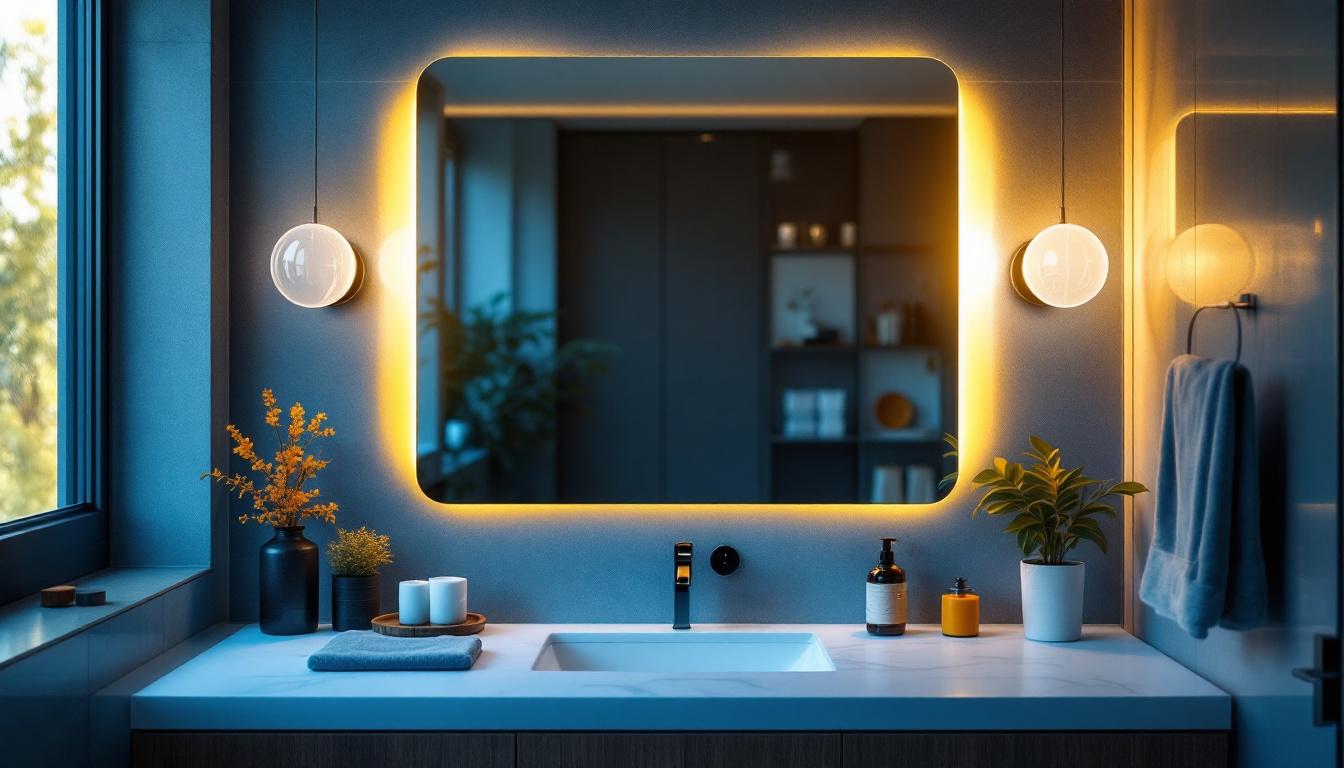
Lighting in a salon is more than just illumination; it is a critical component that directly impacts the client experience, the quality of services, and the overall ambiance. For lighting contractors, understanding the unique demands of salon environments is essential to delivering installations that enhance functionality while complementing design aesthetics.
Salons require lighting that supports precision tasks such as hair coloring, cutting, and makeup application. Poor lighting can lead to errors, dissatisfaction, and even damage to a salon’s reputation. According to industry studies, salons with well-designed lighting report higher client retention rates and improved employee satisfaction, underscoring the role of lighting in business success.
Moreover, the type of lighting used can dramatically influence the mood and energy of the space. Warm, soft lighting can create a cozy and inviting atmosphere, making clients feel relaxed and pampered, while brighter, cooler lights can energize the environment, fostering a sense of vibrancy and activity. The strategic use of dimmers and adjustable fixtures allows salon owners to tailor the lighting to suit different times of day or specific services, ensuring that each client receives the optimal experience. Additionally, incorporating natural light where possible can enhance the overall aesthetic, providing a refreshing and uplifting ambiance that artificial lighting alone cannot replicate.
In addition to enhancing the client experience, proper salon lighting also plays a crucial role in the well-being of the staff. Well-lit workspaces can reduce eye strain and fatigue, allowing stylists to perform their tasks more efficiently and with greater precision. Furthermore, the right lighting can help showcase the skills of the stylists, allowing them to present their work in the best possible light—literally. This not only boosts the confidence of the staff but also enhances the overall perception of the salon’s quality, making it more likely that clients will return for future services and recommend the salon to others.
One of the most critical factors in salon lighting is the Color Rendering Index (CRI). A high CRI, ideally 90 or above, ensures that colors appear true to life. This is indispensable for stylists who need to see hair colors and skin tones accurately to deliver flawless results. When clients come in for color treatments, they expect their hair to be represented accurately under the lighting conditions of the salon. A high CRI allows stylists to make informed decisions about color mixing and application, ultimately leading to higher client satisfaction.
Lighting contractors should specify fixtures that provide consistent, natural light. LED technology has advanced to offer excellent CRI values, energy efficiency, and longevity, making it a preferred choice for salons. Avoid lights with low CRI, as they distort colors and can lead to unsatisfactory outcomes. Furthermore, it’s beneficial to consider the color temperature of the lighting. A temperature between 3000K and 4000K is often ideal, as it mimics natural daylight, helping stylists to assess color vibrancy accurately. This attention to detail not only enhances the working environment but also elevates the overall client experience.
Uniformity in lighting prevents shadows and glare, which can hinder a stylist’s ability to work precisely. Installing fixtures that distribute light evenly across the salon floor helps create a comfortable environment for both clients and staff. In addition to improving visibility, uniform lighting can also enhance the aesthetic appeal of the salon, creating an inviting atmosphere that encourages clients to relax and enjoy their experience. A well-lit space can significantly affect the mood and perception of quality, making it essential for salons to invest in proper lighting solutions.
Consider layering lighting by combining ambient, task, and accent lights. This approach allows for flexibility and ensures that each workstation receives adequate illumination without overwhelming brightness. Ambient lighting sets the overall tone of the salon, while task lighting focuses on specific areas where stylists work, such as mirrors and styling stations. Accent lighting can be used to highlight products or create visual interest in the space. By thoughtfully designing a layered lighting scheme, salons can not only enhance functionality but also create a dynamic and engaging environment that reflects their brand identity and attracts clientele.
Color temperature, measured in Kelvins (K), affects the mood and functionality of a salon space. Lighting that is too cool (above 5000K) can feel clinical and uninviting, while lighting that is too warm (below 2700K) may distort colors and reduce visibility.
For salons, a balanced color temperature between 3000K and 4000K is generally recommended. This range mimics natural daylight, enhancing color accuracy and creating a welcoming atmosphere. Lighting contractors should avoid extremes and tailor the temperature to the salon’s design and purpose. Additionally, incorporating adjustable lighting options can allow stylists to modify the ambiance based on the specific service being offered. For example, a brighter, cooler light may be ideal for precision haircuts, while a softer, warmer light could enhance the experience during a relaxing facial treatment.
Glare can cause discomfort and eye strain for both stylists and clients, while shadows can obscure critical details during styling or makeup application. Improper fixture placement and the use of overly bright bulbs are common culprits.
To mitigate these issues, contractors should use diffusers, indirect lighting, and adjustable fixtures. Installing lights at appropriate angles and heights can also reduce unwanted shadows and glare, improving overall visibility. Moreover, the strategic use of wall sconces or pendant lights can create layers of light that not only enhance the aesthetic appeal of the salon but also provide functional illumination. By ensuring that the lighting is well-distributed throughout the space, salons can create an inviting atmosphere that encourages clients to relax and enjoy their experience, while also allowing stylists to work with precision and confidence.
Energy efficiency is a growing priority in commercial lighting. LEDs consume significantly less power than traditional incandescent or fluorescent bulbs and have a longer lifespan, reducing maintenance costs and downtime.
For lighting contractors, recommending LED fixtures not only benefits salon owners financially but also aligns with sustainability goals. Many LED products now offer dimmable options and customizable color temperatures, providing versatility without sacrificing efficiency.
Integrating smart lighting systems enables salons to adjust brightness and color temperature throughout the day, adapting to different tasks and natural light conditions. Motion sensors and timers can further optimize energy use by ensuring lights are only on when needed.
Lighting contractors should stay informed about the latest control technologies and offer solutions that enhance both convenience and energy management for salon clients.
Compliance with electrical codes and safety standards is non-negotiable. Lighting contractors must verify that all fixtures and installations adhere to local regulations to prevent hazards such as electrical fires or shocks.
This includes proper wiring, grounding, and the use of certified components. Failure to comply can result in costly fines, insurance issues, and reputational damage.
Salons often require multiple lighting fixtures, which can strain electrical systems if not properly planned. Contractors should conduct thorough load calculations and design circuits that accommodate the salon’s needs without risk of overload.
Proper installation techniques, including secure mounting and moisture protection in wet areas like shampoo stations, are crucial for longevity and safety.
Lighting plays a key role in expressing a salon’s brand identity and creating an inviting atmosphere. Contractors should engage with designers and owners early in the project to understand their vision, target clientele, and functional requirements.
This collaboration ensures that lighting choices support the salon’s aesthetic goals while meeting practical needs, resulting in a cohesive and effective design.
Salons evolve over time, and lighting should accommodate changes in layout, services, or branding. Offering modular fixtures, adjustable mounts, and scalable lighting systems allows salon owners to update their spaces with minimal disruption.
Lighting contractors who anticipate future needs and incorporate flexibility into their designs add significant value to their services.
Salon lighting fixtures are subject to frequent use and occasional damage. Contractors should select products that are easy to maintain and replace, minimizing downtime and inconvenience for salon operations.
Providing clear documentation and training for salon staff on basic maintenance can extend fixture life and ensure consistent lighting quality.
Lighting contractors should offer ongoing support and be responsive to any issues that arise after installation. This builds trust and fosters long-term relationships with salon clients.
Regular check-ins, warranty services, and prompt troubleshooting contribute to client satisfaction and positive referrals.
Lighting contractors play a pivotal role in shaping the functionality and ambiance of salons. By prioritizing color accuracy, energy efficiency, safety, and collaboration, contractors can deliver lighting solutions that enhance both the client experience and operational efficiency.
Avoiding common pitfalls such as poor color temperature choices, glare, and non-compliance ensures installations that stand the test of time. Ultimately, thoughtful lighting design tailored to the unique demands of salons elevates the quality of service and supports the success of salon businesses.
Ready to elevate your salon lighting projects with the perfect blend of quality, affordability, and convenience? Look no further than LumenWholesale. We provide contractors with top-quality, spec-grade lighting products at unbeatable wholesale prices, ensuring your installations shine with reliability and high performance. Say goodbye to inflated markups and hello to hassle-free bulk buying with free shipping. Don’t compromise on your lighting solutions—choose LumenWholesale for premium lighting at the best value. Wholesale Lighting at the Best Value.

Discover effective strategies for training your team in the use of LED grow lights, ensuring optimal plant growth and energy efficiency.

Discover the benefits of using LED lamp amber to future-proof your lighting projects.

Illuminate your home with style and safety by exploring the world of LED stair lighting.

Discover how vanity side lights can transform your space while boosting energy efficiency.